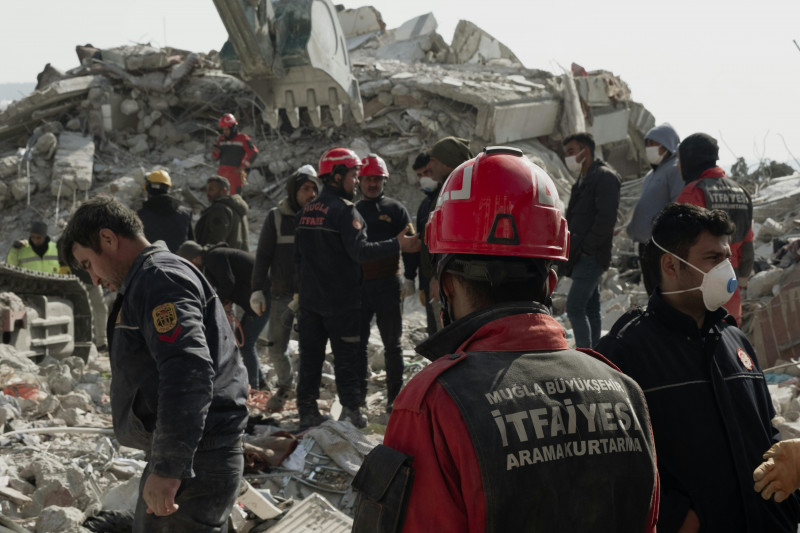When do you think this photo was taken?
About This Photo:
On February 6, 2023, a massive earthquake struck southern Turkey, causing unprecedented destruction and loss of life. The city of Antakya, located in the Hatay province, was one of the hardest-hit areas. With a magnitude of 7.8, this earthquake, along with aftershocks, left a profound impact on both the physical landscape and the lives of the people who called this region home.
The Earthquake's Impact on Antakya
Antakya, an ancient city with a rich cultural heritage, was severely damaged by the earthquake. Known for its historical sites, vibrant culture, and strategic location near the Syrian border, Antakya’s infrastructure was not designed to withstand such a powerful natural disaster. Many buildings, including homes, shops, and historical landmarks, collapsed in seconds, trapping thousands under rubble. The destruction was so extensive that even the most modern structures were not spared, and the city’s skyline was dramatically altered in a matter of moments.
As emergency teams rushed to the scene, Antakya faced major challenges in recovery efforts due to the severity of the damage. Roads were blocked, communication lines were severed, and local hospitals were overwhelmed with casualties. Rescue operations were complicated by aftershocks and the sheer scale of the devastation, making it one of the most challenging rescue efforts in modern Turkish history.
The Human Toll
The human cost of the earthquake was staggering. In Antakya alone, thousands lost their lives, and many more were injured or displaced. Families were torn apart, with loved ones trapped under rubble, and the emotional toll on the survivors was immeasurable. For many, this earthquake marked the end of a way of life they had known for generations.
In the aftermath, the Turkish government and international organizations mobilized to provide aid, including search and rescue teams, medical assistance, and supplies. Temporary shelters were set up, and efforts were made to restore basic services to the affected areas. However, the recovery process has been slow, and it is clear that the road ahead will be long for those whose lives were shattered by the tragedy.
The Role of International Aid
The global community quickly responded to the disaster. Countries from all over the world sent humanitarian aid, rescue teams, and supplies to help the people of Antakya and the surrounding regions. International organizations, including the United Nations and the Red Cross, provided crucial assistance in the form of food, medical care, and temporary housing.
Despite the swift response, the situation remained dire for weeks following the earthquake. Many people found themselves without homes, food, or clean water, facing harsh winter conditions in a region that had been torn apart by the tremors.
Looking Forward: The Road to Recovery
As Turkey continues to grapple with the aftermath of the 2023 earthquake, the recovery process is ongoing. Efforts are focused not only on rebuilding homes and infrastructure but also on restoring the spirit of a community that has been deeply affected. The people of Antakya, known for their resilience and warmth, are slowly beginning to rebuild their lives, though the scars of this tragedy will remain for years to come.
The 2023 earthquake in Antakya serves as a painful reminder of the vulnerability of regions that lie along fault lines. While the devastation was immense, it also highlighted the strength of human spirit and the importance of international solidarity in times of crisis.

